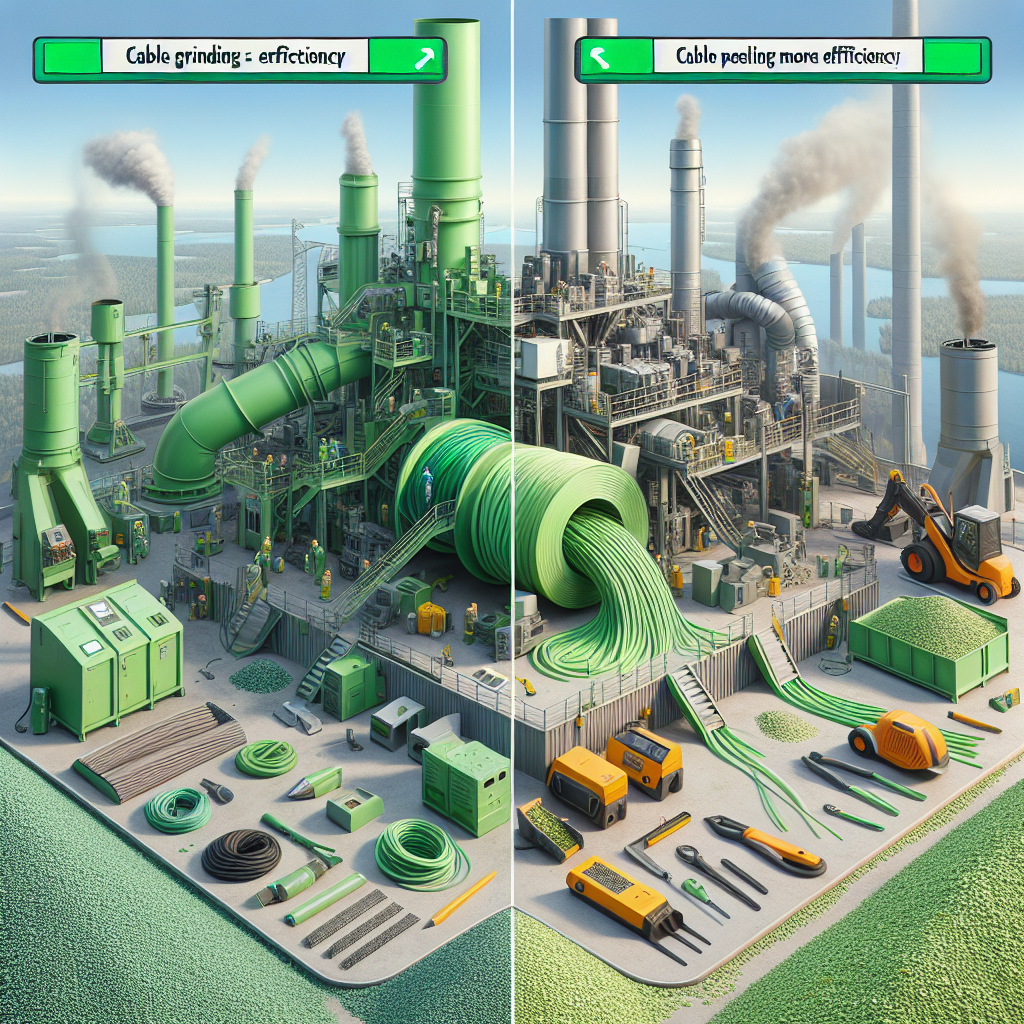Blog Ecobraz Eigre

Difference between grinding and peeling cables: which process is more efficient
The efficient separation of copper and aluminum from electrical cables is essential for recycling and reusing the materials. Two of the main processes used are grinding and cable stripping. Each method has specific characteristics that influence its efficiency, cost and applicability. In this article, we will explore the differences between cable grinding and cable stripping, analyzing which process performs better for metal recovery and environmentally friendly disposal.
What is cable grinding?
Cable grinding consists of the mechanical fragmentation of cables, reducing them to smaller particles, which then undergo separation processes to recover the metals present, such as copper and aluminum. In this method, the cables are crushed by mills or shredders, generating a mixture of plastic and metallic materials that facilitates sorting.
This process is widely used in automated recycling lines, as it allows for a greater volume of processing, as well as being relatively quick. However, grinding can result in lower purity of the recovered material and requires efficient systems for separating plastic waste.
What is cable stripping?
Stripping, in turn, is a process that involves manually or mechanically removing the insulating jacket from cables to expose the metal wires, with the aim of directly recovering the metals without the need for fragmentation. It can be done using special tools, specific machines or even thermal methods.
This method guarantees superior quality of the recovered metal, as the copper or aluminum remains intact and clean, without contamination from plastics or other materials. However, peeling can be more laborious and slower, making it less efficient in large volumes without adequate automation.
Comparison between grinding and peeling
Efficiency in metal recovery: Peeling provides greater purity of the recovered metal material, but grinding allows larger quantities of cables to be processed in less time, despite the need for additional steps to correctly separate the materials.
Energy consumption and cost: Grinding requires greater energy consumption due to the use of shredding equipment and separation systems, while peeling, especially when done manually, can be more economical but requires skilled labor.
Environmental impact: Both processes contribute to sustainable recycling, but grinding can generate fine particles and plastic waste that need to be treated properly to avoid pollution. Peeling, being more selective, minimizes this impact.
Which process is more efficient?
The choice of the most efficient process depends on the application context. For small operations that value the purity of the metal, peeling is ideal. For recycling industries seeking high productivity, grinding combined with advanced separation systems is more advantageous.
However, with technological advances, automatic peeling machines have greatly improved the speed and precision of the process, reducing the difference in efficiency between the methods. Combining the two processes in complementary steps can also optimize the results.
Conclusion
In summary, grinding and stripping are two fundamental methods for recycling electrical cables, each with its advantages and disadvantages. Grinding is more suitable for volume and speed, while stripping provides higher quality and purity of the recovered material. The decision on which technique to adopt should take into account factors such as scale of operation, available resources and recycling objectives, always seeking the best economic and environmental efficiency.

Deixe um comentário
O seu endereço de e-mail não será publicado. Campos obrigatórios são marcados com *